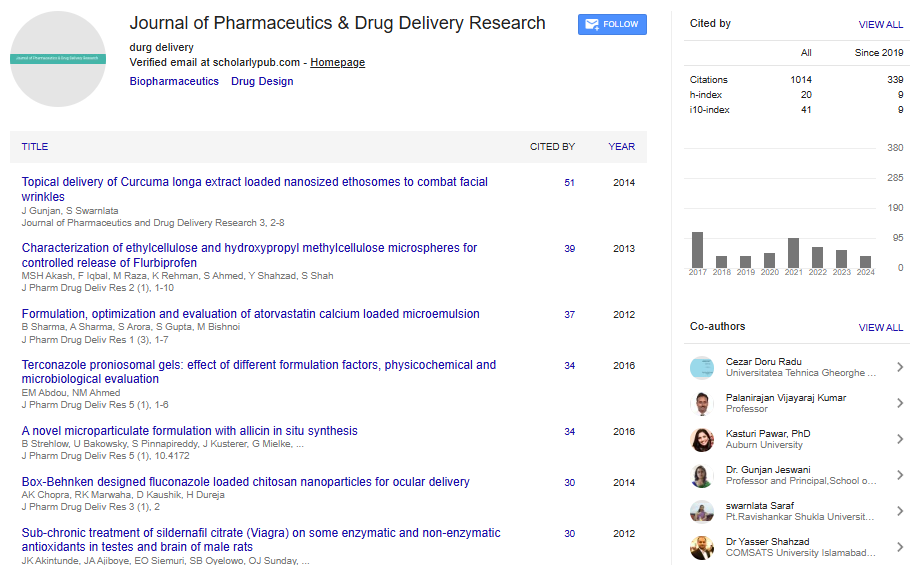Quadrugnostic nanomedicine for overcoming anticancer drug resistance and for diagnostics
Yoav D Livney, Ravit Edelman, Yehuda G Assaraf, Inna Levitzki, Tal Shahar and Anton Slavkin
Technion-Israel Institute of Technology, Israel
: J Pharm Drug Deliv Res
Abstract
Conventional chemotherapy requires high doses of drugs causing severe toxic side effects and exhibiting limited efficacy due to frequent emergence of Multidrug Resistance (MDR), i.e., efflux of drugs by ATP driven transporters of the ABC superfamily, such as P-glycoprotein. Another challenge posed by cancer is the diagnostic localization of tumors and their metastases. In the current research we are developing a novel nanomedical platform we termed “quadrugnostic nanoparticles” (QNPs), that is envisioned to be the next generation platform for simultaneous cancer diagnostics and therapeutics (theranostics): These QNPs harbor in the same vehicle, four synergistic components, including a selective targeting moiety, a cytotoxic drug, a chemosensitizer for overcoming a well-defined mechanism of MDR and a diagnostic element for the localization of the tumor and its metastases. The prototype QNPs comprise self-assembling Maillard reaction based conjugates of two natural body components, one hydrophilic and the other partly hydrophobic: Hyaluronic Acid (HA) and bovine serum albumin (BSA), respectively. HA is a natural anionic polysaccharide and a chief component of the extracellular matrix in the human body. It contributes significantly to cell proliferation and migration, hence is sought by certain cancer types for tumor development and metastasis. Therefore, such tumor cells overexpress the CD44 receptor to take up HA from the circulation. HA thus serves as the active-targeting moiety for homing into cancer cells overexpressing CD44 (e.g., ovarian cancer). Results thus far reveal that the HA-BSA conjugates formed self-assembled NPs and entrapped hydrophobic cytotoxic drugs (e.g., Paclitaxel or C-1375 Imidazoacridinone) and a chemosensitizer (tariquidar). The NPs were selectively taken up by cells overexpressing CD44 receptor but not by cells lacking CD44 and were more cytotoxic to those cells compared to the free cytotoxic drug because of active uptake by CD44. Fluorescently labeled QNPs were formed for diagnostic imaging and treatment studies.
Biography
Yoav D Livney has completed his BSc in Food Engineering and Biotechnology, Technion Israel Institute of Technology (1990); MS in Food Engineering, UW Madison, Wisconsin, USA (1995); PhD in Food Engineering & Biotechnology Technion IIT (2002) and; Post doctorate in Food Science, University of Guelph, Canada. He served as a Lecturer (2004), Assistant Professor (2007) and Associate Professor (2012), and is an expert in physical chemistry of biopolymers and nano-delivery systems for nutraceuticals and drugs. Hehas authored more than 50 publications, 8 patents, gave more than 35 invited talks at international conferences and mentored 13 MSc and 7 PhD students. He is serving as the Editorial-Board Member in several reputed journals.
Email: livney@technion.ac.il
 Spanish
Spanish  Chinese
Chinese  Russian
Russian  German
German  French
French  Japanese
Japanese  Portuguese
Portuguese  Hindi
Hindi 
